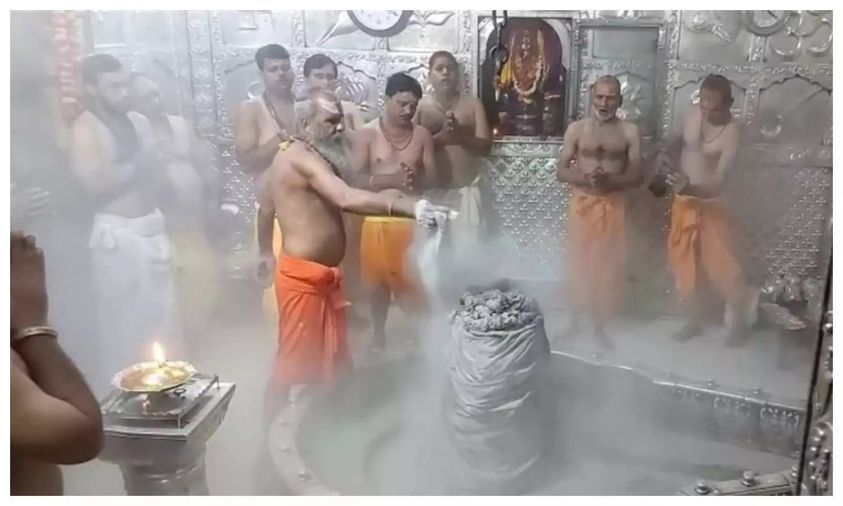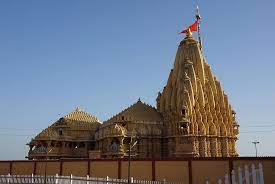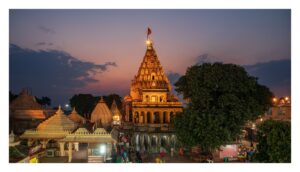
India, a land of spiritual awakening and deep-rooted religious beliefs, is adorned with countless temples, shrines, and pilgrimage sites that cater to the diverse spiritual needs of its people. Among these sacred places, the twelve Jyotirlingas, dedicated to Lord Shiva, hold a special place in the hearts of devout Hindus.
Mahakaleshwar Jyotirlinga, situated in the historical city of Ujjain, is one such divine abode that beckons both pilgrims and tourists alike. In this comprehensive exploration, we delve into the rich history, religious significance, and architectural splendor of Mahakaleshwar Jyotirlinga.
Historical Background
Mahakaleshwar Jyotirlinga is believed to have a history that dates back thousands of years. The ancient city of Ujjain, where it is located, has been a hub of spirituality and knowledge for centuries. The temple is an architectural marvel, a masterpiece that resonates with the grandeur of ancient Indian architecture. The temple’s history is intertwined with myths, legends, and historical anecdotes that add to its mystique.
According to Hindu mythology, Ujjain is one of the seven holy cities where salvation can be attained. The Mahakaleshwar temple stands on the banks of the sacred Kshipra River and is a shrine that enshrines Lord Shiva in his fierce form. Legend has it that a cowherd once discovered a natural cavity in the ground from which water flowed ceaselessly. To his amazement, the water would douse a flame lit by the cowherd. This unusual occurrence led to the discovery of the Jyotirlinga of Mahakaleshwar, symbolizing the eternal power and presence of Lord Shiva. Since then, the temple has been a revered pilgrimage site.
Religious Significance
The religious significance of Mahakaleshwar Jyotirlinga extends far and wide. Devotees flock to this temple to seek the blessings of Lord Shiva and to witness the divine aura of this sacred place. Some key aspects of its religious importance are:
- Jyotirlinga Worship: Mahakaleshwar Jyotirlinga is one of the twelve Jyotirlingas, each representing Lord Shiva in his unique form and character. The worship of these Jyotirlingas is believed to bestow immense spiritual merit and fulfill the desires of the devotees.
- Maha Shivaratri: The festival of Maha Shivaratri is celebrated with great fervor in Ujjain and at the Mahakaleshwar temple. It attracts thousands of pilgrims who perform special rituals and seek the divine blessings of Lord Shiva.
- Importance of Linga: The Linga at Mahakaleshwar is swayambhu, which means it is self-manifested. This adds to its significance as a place where Lord Shiva’s presence is believed to be eternal and self-originating.
- A Place of Salvation: Ujjain, with the Mahakaleshwar temple at its heart, is considered a place where the cycle of life, death, and rebirth can be broken. Devotees believe that a visit to this temple can lead to spiritual liberation.
Architectural Grandeur
The architecture of Mahakaleshwar Jyotirlinga is a magnificent blend of Rajput and Maratha styles. The temple’s striking shikhara (tower) is adorned with intricate carvings and sculptures, and the spire reaches great heights, creating a mesmerizing sight.
- Garbhagriha: The sanctum sanctorum houses the Jyotirlinga in a silver-plated chamber. The linga is ornately adorned with flowers and offerings by devotees. This inner sanctum is where the divine presence of Lord Shiva is felt most profoundly.
- Shiva’s Vehicle – Nandi: Just outside the sanctum, there is a massive idol of Nandi, Lord Shiva’s sacred bull. Nandi is always depicted facing the deity, symbolizing the eternal devotion and servitude of Nandi to Lord Shiva.
- Mahakaleshwar Mandir Bells: The temple is famous for its huge brass temple bells, which produce a distinct and resonant sound when rung. These bells add to the spiritual ambiance of the temple and can be heard throughout the city.
- Rituals and Aartis: The temple conducts several rituals and aartis throughout the day. The evening Bhasma Aarti is especially famous, where the Jyotirlinga is adorned with sacred ash, and devotees experience a divine connection.
The Spiritual Experience
Visiting Mahakaleshwar Jyotirlinga is not merely a physical journey; it’s a spiritual odyssey. Pilgrims and tourists alike experience a profound sense of divinity and peace in this sacred precinct. The spiritual experience includes:
- Dip in the Kshipra River: Many devotees take a ritual dip in the holy Kshipra River before entering the temple. The belief is that this purifies the soul and prepares one to meet the deity.
- Darshan of the Jyotirlinga: The main purpose of the visit is to have a darshan (sight) of the Jyotirlinga, which is a moment of deep devotion and personal connection with Lord Shiva.
- Participation in Rituals: Devotees are encouraged to participate in the various rituals and aartis conducted at the temple. These rituals create a sense of unity and devotion among the worshippers.
- Exploration of Ujjain: Ujjain is a city steeped in history and spirituality. Exploring the city, visiting other temples, and interacting with locals can be an enriching experience.
Challenges and Preservation
While Mahakaleshwar Jyotirlinga stands as a testament to India’s rich spiritual heritage and architectural prowess, it faces challenges like many other historical sites. The preservation of its ancient architecture and traditions is of paramount importance. Measures are needed to manage the increasing number of visitors and to ensure that the sanctity of the place is upheld.
Conclusion
Mahakaleshwar Jyotirlinga in Ujjain is not just a temple; it’s a sacred abode that resonates with the essence of Hindu spirituality. Its history, religious significance, architectural grandeur, and the spiritual experience it offers make it a must-visit for devotees and tourists. As people continue to seek solace and spiritual growth, Mahakaleshwar Jyotirlinga stands as a timeless symbol of Lord Shiva’s eternal presence and a testament to the enduring spiritual legacy of India.

